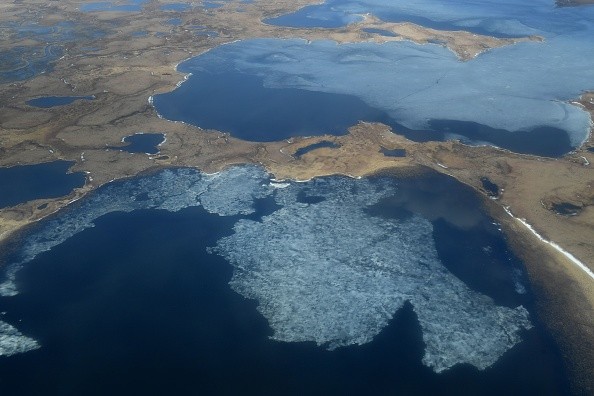The Arctic temperature record of 38 degrees Celsius measured in Siberia in 2020 was formally acknowledged by the United Nations on Tuesday as the highest, raising "alarm bells" concerning global warming.

High Temperature in the Arctic
On June 20, 2020, the Russian town of Verkhoyansk had a scorching temperature of 100.4 degrees Fahrenheit, making it the hottest temperature ever recorded in the Arctic Circle, according to the World Meteorological Organization.
When it comes to severe weather reports, the World Meteorological Organization (WMO) has never before included record temperatures in the Arctic to its collection, the UN body stated.
In a statement, WMO Archive head Petteri Taalas stated that the new Arctic record is one in a series of discoveries that raise the alarm bells about changing climate.
Temperatures have been recorded in Verkhoyansk, a city 70 miles north of the Arctic Circle, since 1885, according to CBS News.
Agency officials noted the temperature was more matching Mediterranean than Arctic conditions when it was recorded at a meteorological station in Siberia during an unusually protracted Siberian heatwave.
The World Meteorological Organization (WMO) reported that temperatures in Arctic Siberia were up to 10 degrees Celsius above normal for most of last summer, contributing to wildfires and catastrophic sea ice loss.
As a result of the heatwave, 2020 was named one of the three hottest years on record worldwide. The Antarctic continent reached a record high last year of 18.3 degrees C (64.9 degrees F), according to Taalas.
Changes in Ocean Radiation Properties
The World Meteorological Organization (WMO) is still looking into the 54.4 C (129.92 F) temperatures reported in Death Valley, California, the world's hottest spot, in 2020 and 2021.
A new European temperature record of 48.8 C (119.8 F) was recently recorded on the Italian island of Sicily, and its specialists are now attempting to validate it.
Archives at the World Meteorological Organization never had so many active simultaneous investigations, as per Taalas
According to Mr Taalas, the Russian Arctic's melting snow and ice is contributing to the country's warming.
A shift in soil and ocean radiation characteristics, he said, is to blame. The surface radiation properties are considerably different from black soil or open sea whenever there is snow cover, he remarked.
High temperatures in the Arctic Circle have been added to the World Meteorological Organization's record of global weather extremes.
The World Meteorological Organization (WMO) claims that the Arctic is warming at a rate more than double the worldwide average.
Thawing of Permanently Frozen Permafrost
Scientists are concerned because the thawing of permafrost releases trapped carbon dioxide and methane into the atmosphere.
In a vicious loop known as positive feedback, these greenhouse gases may induce greater heat and further melting of the permafrost.
Increased temperatures also hasten the melting of Arctic land ice, contributing to sea level rise via increased runoff into the ocean. Because of human activity, global temperatures are rising, posing a danger to all aspects of human existence.
Humans and the natural world are on the verge of a global warming so severe that droughts will increase, sea levels will rise, and a great number of species will go extinct.
Related Article : Countries on Pacific Island Lead the Report on Global Warming, According to Experts
For more news, updates about global warming and similar topics don't forget to follow Nature World News!
© 2026 NatureWorldNews.com All rights reserved. Do not reproduce without permission.





